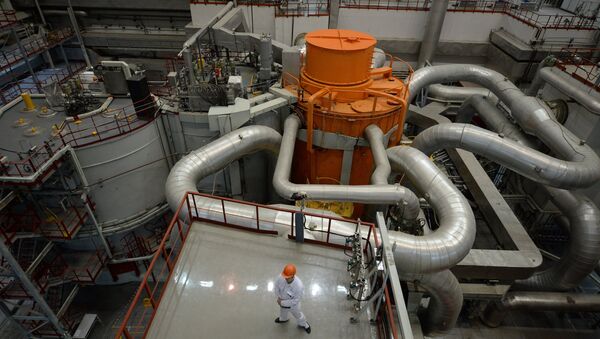Russian nuclear physics researchers have developed a software package that simulates nuclear fuel handling processes under the Russian nuclear project Proryv (Breakthrough), which could be used to master the technologies needed to develop the nuclear power industry of the future.
The Proryv project aims to streamline breeder reactor closed nuclear fuel cycle technology. MEPhI believes the project will strengthen Russia’s leading position on the global nuclear technology market.
READ MORE: Russian Experts Call Project of NPP With Fast-Breeder Reactors Competitive
A closed-loop nuclear fuel cycle for these reactors suggests that they will independently generate their own supply of plutonium, a nuclear fuel being reproduced with non-enriched uranium feedstock. Therefore, the reactor’s operating modes and its specifications need to be designed in such a way as to make the reactor self-sufficient, to provide it with the required amount of fissionable isotopes and to maintain the reactor during its service life. This emphasizes the need to simulate nuclear fuel-handling processes for reactors of this kind.

In an effort to accomplish this, the National Research Nuclear University MEPhI (NRNU MEPhI) has teamed up with the National Research Center Kurchatov Institute and developed the REPRORYV (Recycle for PRORYV) software package, which simulates nuclear fuel-handling processes outside reactors.
The REPRORYV software code simulates the process of loading and reloading nuclear fuel inside the cores of fast neutron reactors and fuel processing. The code was developed to study the possibility of providing the reactor with its own fuel supply during its service life.
The versatile REPRORYV code can simulate fuel handling processes in current fast neutron reactors and other advanced units of this type, Deputy MEPhI Director Georgy Tikhomirov told RIA Novosti.
The new software package will be able to calculate neutron-physical specifications for any type of nuclear fuel. In addition, REPRORYV helps fast neutron reactors operating under the so-called two-component nuclear power concept to independently produce their own fissionable materials, that is, together with “heat” neutron reactors, the mainstay of the modern nuclear power industry.



